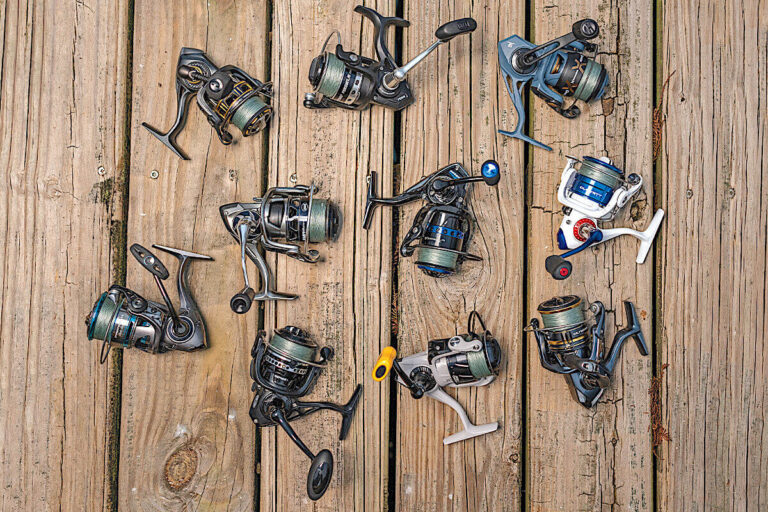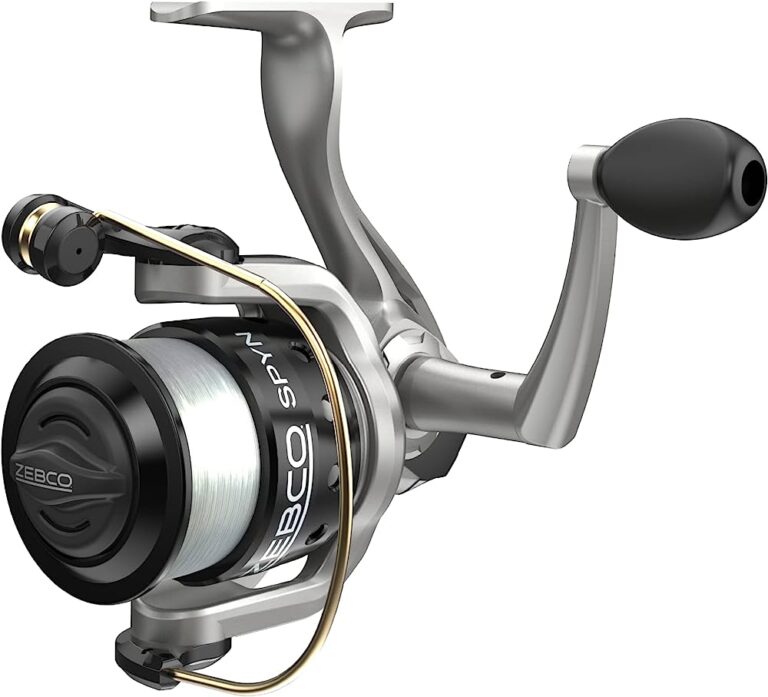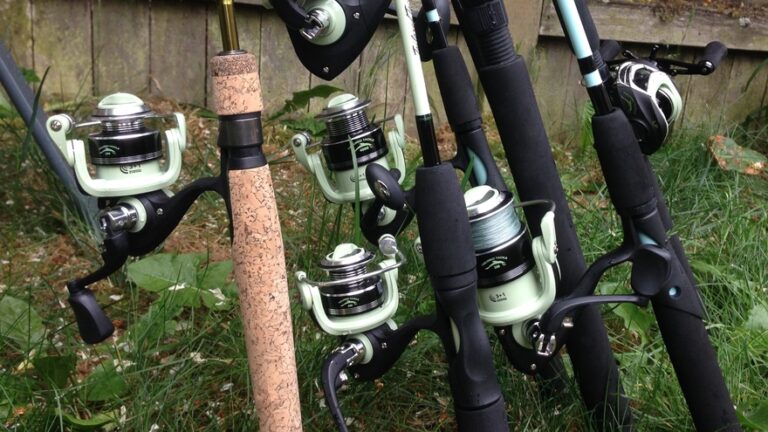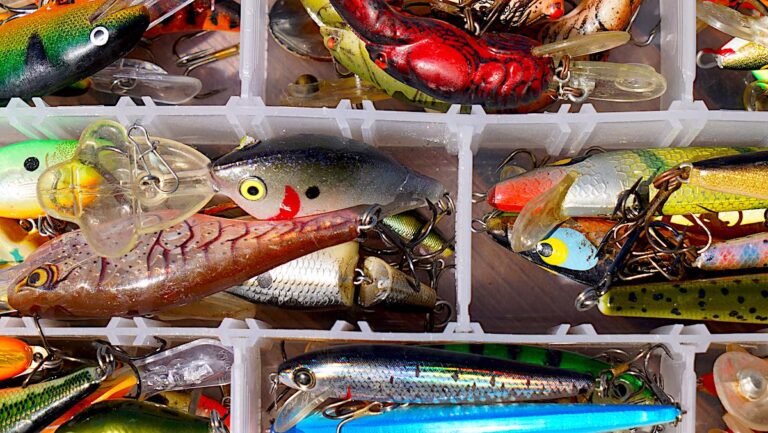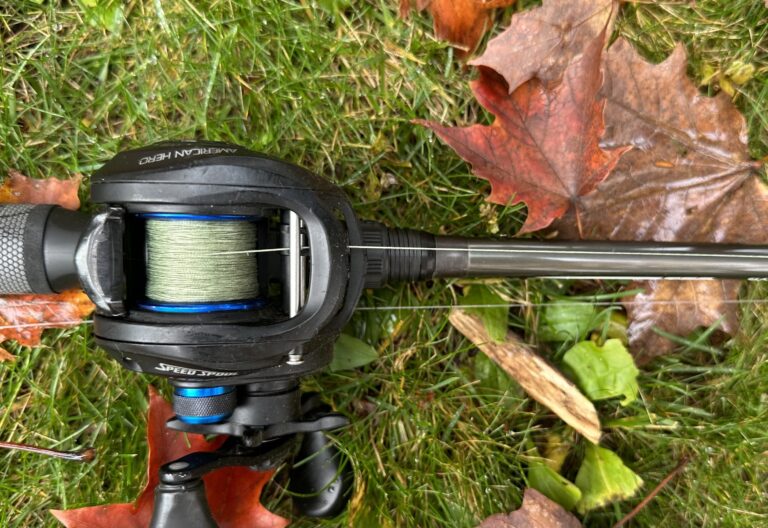Yes, a spinning rod can be used for different fishing techniques due to its versatility and adaptability. Spinning rods are popular among anglers for their ability to cast lures and baits, making them suitable for various fishing styles such as freshwater fishing, saltwater fishing, bass fishing, trout fishing, and more.
With their spinning reel design, these rods offer better control and accuracy while casting, allowing anglers to effectively target different fish species and environments. Whether you’re casting lightweight lures for trout in a river or going after big game fish in the open ocean, a spinning rod can handle a wide range of fishing techniques and conditions.
Its flexibility makes it a valuable tool for anglers of all skill levels.

Credit: www.reelcoquinafishing.com
The Versatility Of A Spinning Rod
A spinning rod is an essential tool for any angler, offering versatility and adaptability to various fishing techniques. Its unique design and features allow it to be used effectively in different fishing scenarios. Whether you’re a beginner or an experienced angler, understanding the capabilities of a spinning rod can greatly enhance your fishing experience.
Here, we’ll delve into the key points that showcase the versatility of a spinning rod:
Understanding The Capabilities Of A Spinning Rod
- Spinning rods are suitable for both freshwater and saltwater fishing, making them versatile across different environments.
- The flexibility of a spinning rod allows for a wide range of fishing techniques, including casting, trolling, and jigging.
- The spinning reel mounted on a spinning rod provides excellent control and accuracy, making it ideal for precision casts in various fishing situations.
- Unlike baitcasting rods, spinning rods have a fixed spool that eliminates backlash, making them perfect for beginners or those who prefer hassle-free fishing.
- The lightweight and ergonomic design of a spinning rod allows for longer periods of comfortable fishing, reducing fatigue and increasing efficiency.
Making The Most Of Different Fishing Techniques With A Spinning Rod
- Casting: A spinning rod enables long-distance casting. You can use it for targeting specific areas, such as the shoreline or near structures, maximizing your chances of landing a catch.
- Trolling: With a spinning rod, you can easily control the line while trolling. This technique is particularly effective for targeting moving fish species in open water.
- Jigging: Jigging involves vertically moving the lure up and down in the water to attract fish. The sensitivity and responsiveness of a spinning rod make it an excellent choice for this technique.
- Bottom fishing: Whether you’re fishing from a boat or the shore, a spinning rod allows you to present bait effectively on the bottom. Its sensitivity ensures you can detect even the slightest nibble.
- Live bait fishing: Spinning rods handle live bait well, enabling you to cast accurately and present the bait naturally. This technique is popular for targeting a wide range of species.
By understanding the capabilities of a spinning rod, you can take advantage of its versatility for various fishing techniques. Its design, control, and adaptability make it an indispensable tool for both beginners and seasoned anglers alike. So grab your spinning rod and explore the endless possibilities it offers in the world of fishing!
Techniques That Can Be Used With A Spinning Rod
A spinning rod is a versatile fishing tool that can be used for various techniques. Whether you’re casting and retrieving for small to medium-sized fish, bottom fishing, or vertical jigging, a spinning rod can handle it all. Let’s explore these techniques and discover how to maximize success with each one.
Casting And Retrieving For Small To Medium-Sized Fish
- Casting and retrieving is a popular technique for targeting small to medium-sized fish.
- The spinning rod’s flexibility and ease of use make it ideal for this method.
- Here are some tips and tricks to help you master this technique:
- Use lightweight lures or bait to achieve maximum casting distance.
- Vary your retrieve speed to entice different fish species.
- Pay attention to the water’s surface and look for any signs of fish activity.
- Experiment with different casting angles and distances to increase your chances of a bite.
Bottom Fishing With A Spinning Rod
- Bottom fishing involves targeting fish that dwell near the bottom of the water column.
- While spinning rods are commonly associated with casting and retrieving, they can also be adapted for bottom fishing techniques.
- Here’s how you can make the most of your spinning rod when bottom fishing:
- Select a spinning rod with sufficient power and sensitivity to handle heavier rigs and baits.
- Opt for a bottom fishing rig, such as a carolina rig or a fish-finder rig, to effectively present your bait near the bottom.
- Use live or cut bait that is attractive to bottom-dwelling species.
- Focus on fishing structures like reefs, drop-offs, or submerged features where fish are likely to congregate.
Vertical Jigging With A Spinning Rod
- Vertical jigging is a technique that involves dropping a weighted lure vertically into the water and then jerking it up and down to attract fish.
- A spinning rod can be an excellent choice for vertical jigging due to its sensitivity and maneuverability.
- Here’s how you can effectively use a spinning rod for vertical jigging:
- Choose a spinning rod with a fast action and medium-heavy power to provide the right amount of sensitivity and strength.
- Opt for vertical jigs that imitate the baitfish commonly found in the target area.
- Pay attention to the movement of your rod tip and the feel of the line to detect any subtle strikes.
- Experiment with different jigging techniques, such as short hops or long sweeps, to trigger a reaction from the fish.
Remember, mastering these techniques takes practice and patience. Don’t be afraid to experiment and adapt your approach based on the conditions and the behavior of the fish you’re targeting. With a spinning rod in your hands, you have a versatile tool that can tackle a variety of fishing techniques.
So get out there and reel in some unforgettable catches!
Tips For Mastering Different Fishing Techniques With A Spinning Rod
Matching The Spinning Rod To The Fishing Technique
- Choosing the right spinning rod can significantly impact your success in different fishing techniques.
- Consider the following when matching your spinning rod to the fishing technique:
- Line weight and lure weight: Ensure that the rod’s specifications match the line weight and lure weight requirements of the technique you’re using.
- Rod power: Light power rods are suitable for finesse techniques, while medium or heavy power rods work well for heavier baits and techniques that require more backbone.
- Rod action: Fast action rods provide greater sensitivity and responsiveness for techniques that require quick hooksets, while slower action rods offer more flexibility and forgiveness.
- Rod material: Graphite rods are lighter and more sensitive, perfect for finesse techniques, while fiberglass rods offer greater durability and power.
- Reel compatibility: Ensure that the spinning reel you use is compatible with the spinning rod you choose.
Understanding The Specifications And Features To Look For In A Spinning Rod
- To make an informed decision when selecting a spinning rod, understanding the following specifications and features is essential:
- Length: Consider the length of the rod, which affects casting distance, leverage, and control. Longer rods provide superior casting distance, while shorter rods offer increased accuracy and control.
- Power: Power refers to the rod’s ability to bend and resist pressure. Different fishing techniques require different power levels, such as light, medium, or heavy.
- Action: Action implies how much and where the rod bends under pressure. Options include fast, medium, or slow action, each suited for specific fishing techniques.
- Guides: Quality guides with durable inserts ensure smooth line movement and prevent excessive wear and tear.
- Handle: Ergonomic handles with comfortable grip materials enhance angler comfort during extended fishing sessions.
- Overall construction: Consider the overall build quality and materials used in the spinning rod to ensure longevity and optimal performance.
Considerations For Selecting The Appropriate Rod Length, Power, And Action
- Choosing the right rod length, power, and action involves careful consideration of the fishing technique you intend to pursue:
- Rod length: Longer rods excel in techniques like surf fishing or casting for greater distances, while shorter rods offer better control in close quarters or when fishing from a boat or kayak.
- Rod power: Light power rods are ideal for finesse fishing, medium power rods provide versatility in various techniques, and heavy power rods offer the strength to handle larger gamefish or heavy cover.
- Rod action: Fast action rods are responsive and excel in techniques requiring quick hook sets, whereas slow action rods are more forgiving and suitable for techniques relying on a slower presentation.
Practice And Technique Refinement
- Mastering different fishing techniques with a spinning rod requires continuous practice:
- Practice casting: Regularly practice casting techniques to improve accuracy and distance.
- Fine-tune your reel settings: Adjust the drag, brake system, and line tension to optimize your reel’s performance for specific techniques.
- Analyze and learn: Analyze your fishing sessions and learn from each experience, adjusting your strategy, presentation, and equipment accordingly.
Honing Casting Skills For Different Fishing Techniques
- Casting skills play a crucial role in successful fishing with a spinning rod. Consider the following to improve your casting technique:
- Practice precision: Focus on casting accuracy by aiming for specific targets, such as likely fish-holding areas or structure.
- Master the art of skipping: Develop the skill to skip your bait or lure under docks, overhanging trees, or other obstructions, gaining access to hard-to-reach fish.
- Improve distance casting: Experiment with different casting techniques, such as the pendulum cast or overhead cast, to maximize casting distance.
Understanding The Nuances Of Each Technique And Adjusting Accordingly
- Every fishing technique has unique characteristics and requires specific adjustments when using a spinning rod:
- Vary retrieval speed: Different techniques call for variations in lure retrieval speed, such as slow and steady retrieves for finesse techniques or erratic actions for certain predatory presentations.
- Alter bait presentation: Adjust your bait presentation based on the target species and fishing technique being employed, modifying factors like depth, action, and the presence of scent or noise.
- Utilize different lure types: Experiment with different lure types and sizes to establish which ones perform best for each fishing technique and condition.
Experimentation And Adaptation
- To improve your angling skills and adapt to changing fishing scenarios, don’t be afraid to experiment:
- Try new techniques: Explore a wide range of fishing techniques, both traditional and innovative, to expand your fishing arsenal and knowledge.
- Modify existing techniques: Adapt existing techniques by incorporating elements from other techniques, enhancing your chances of success when conditions are less than optimal.
How To Adapt A Spinning Rod To Fit Various Fishing Scenarios
- Adjust your spinning rod setup to fit various fishing scenarios and conditions:
- Line selection: Match the appropriate line type, strength, and diameter to the fishing technique and target species, considering factors like visibility, sensitivity, and abrasion resistance.
- Terminal tackle adjustments: Modify your hooks, weights, floats, or leaders to suit specific fishing situations, ensuring proper bait presentation and increasing your chances of hooking into fish.
Troubleshooting Common Challenges
- When using a spinning rod for different techniques, you may encounter common challenges. Here are some solutions and tips to overcome them:
- Line twists and tangles: Prevent line twists by properly spooling the line onto your reel and using appropriate line twist control techniques.
- Wind interference: Adjust your casting technique, casting angle, and timing to counter the effects of wind when fishing with a spinning rod.
- Landing larger fish: Apply proper drag adjustments, maintain steady pressure on the fish, and utilize the rod’s power to successfully land larger fish.
Remember, mastering different fishing techniques with a spinning rod requires practice, adaptation, and an understanding of the specific rods and techniques involved. Keep honing your skills, learning from each fishing session, and experimenting to broaden your angling horizons. Happy fishing!
Conclusion
A spinning rod can indeed be used for a variety of fishing techniques, making it a versatile tool for anglers. The flexibility and ease of use of a spinning rod make it suitable for both beginners and experienced fishermen. Whether you enjoy fishing in freshwater or saltwater, a spinning rod can handle it all.
From casting lightweight lures to battling larger fish, this type of rod offers the right balance of power and sensitivity. With a spinning rod, you can effortlessly master techniques such as finesse fishing, drop shotting, and even topwater fishing. Additionally, the ability to adjust the line tension and control the casting distance allows for further customization in different fishing scenarios.
So, if you’re looking to expand your fishing techniques and maximize your success on the water, consider adding a spinning rod to your arsenal. Happy fishing!

